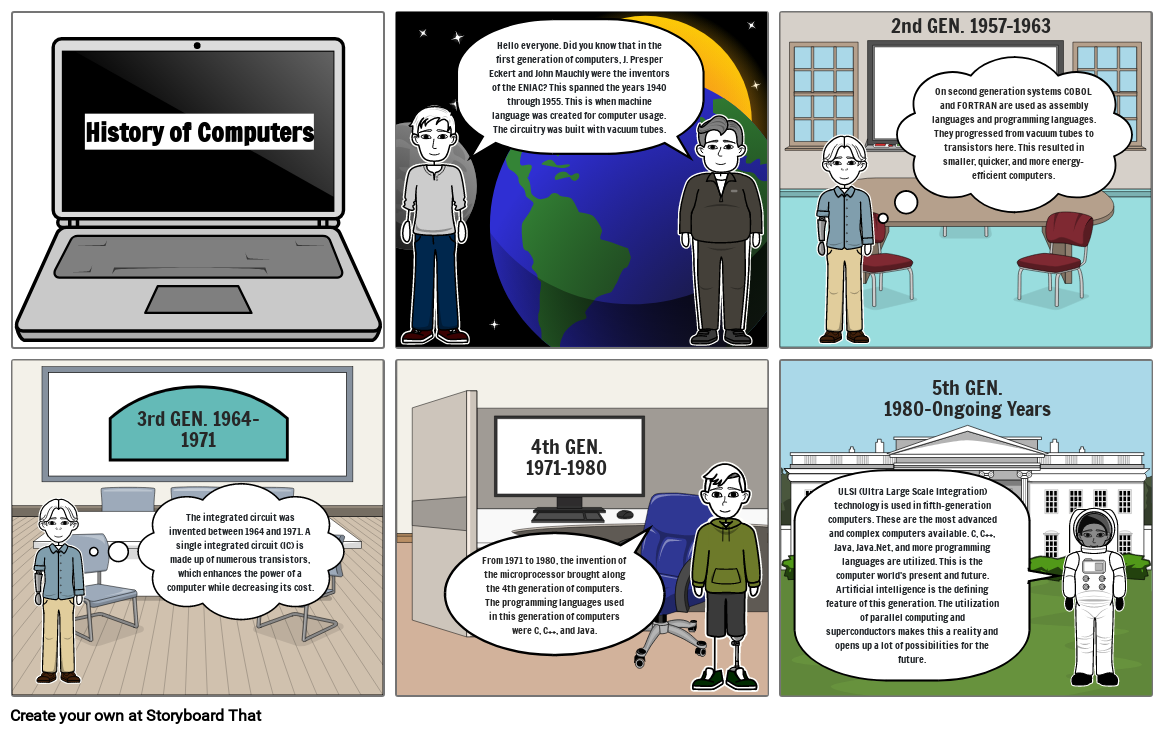Unknown Story

Siužetinės Linijos Tekstas
- History of Computers
- Hello everyone. Did you know that in the first generation of computers, J. Presper Eckert and John Mauchly were the inventors of the ENIAC? This spanned the years 1940 through 1955. This is when machine language was created for computer usage. The circuitry was built with vacuum tubes.
- On second generation systems COBOL and FORTRAN are used as assembly languages and programming languages. They progressed from vacuum tubes to transistors here. This resulted in smaller, quicker, and more energy-efficient computers.
- 2nd GEN. 1957-1963
- The integrated circuit was invented between 1964 and 1971. A single integrated circuit (IC) is made up of numerous transistors, which enhances the power of a computer while decreasing its cost.
- 3rd GEN. 1964-1971
- From 1971 to 1980, the invention of the microprocessor brought along the 4th generation of computers. The programming languages used in this generation of computers were C, C++, and Java.
- 4th GEN. 1971-1980
- 5th GEN. 1980-Ongoing Years
- ULSI (Ultra Large Scale Integration) technology is used in fifth-generation computers. These are the most advanced and complex computers available. C, C++, Java, Java.Net, and more programming languages are utilized. This is the computer world's present and future. Artificial intelligence is the defining feature of this generation. The utilization of parallel computing and superconductors makes this a reality and opens up a lot of possibilities for the future.
Sukurta daugiau nei 30 milijonų siužetinių lentelių

